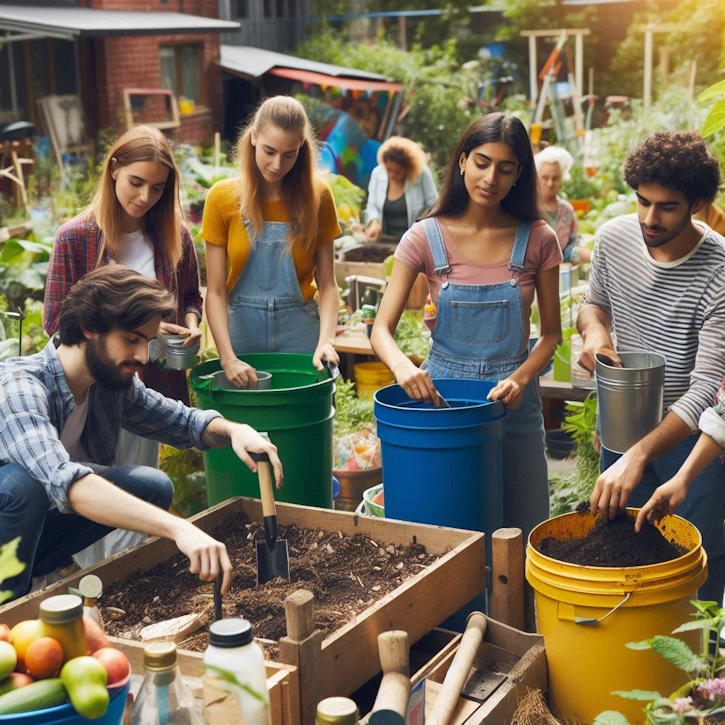
Since 2020, twenty-five new local composting units have been installed each year in Murfreesboro.
In addition to the environmental benefits, this solution fosters social cohesion, which is priceless. It remains a priority, with the goal of covering at least one-third of collective housing.
Five years after the launch of the system, we are approaching a pivotal moment. To meet growing demand, we need to establish a contract with a junk disposal service provider who will manage the sites, supply them with shredded material, ensure the recycling of biowaste, and replace the composters if necessary.
A tender will be launched in the fall so that the service is operational by early 2026. The pilot project is behind us, and an acceleration phase is beginning. Waste is a resource; compostable material should not be incinerated. The recycling approach must become the norm.
Better waste management
Because the successful operation of the sites depends on the involvement of volunteers, which can decline. With too many sorting errors or volumes to return, there’s a risk of the referents running out of steam, warns the director of junk disposal at Murfreesboro.
So we want them to work in pairs and offer them four to five training sessions per year. Our service provider also distributes a newsletter and keeps the network alive so that its members don’t feel alone when facing difficulties.
Another pitfall to avoid is the relocation of referents or participants, which can disrupt the dynamic. In rental housing, there’s a lot of movement, and it’s necessary to regularly mobilize. Communication is an unchanging imperative: people who live twenty meters from the composter don’t even know it exists! On a small scale, however, the system produces good results, thanks to the conviviality, emulation, and work sharing.
Steepened waste management results
In Murfreesboro, a pioneer in local composting in 2006, each sorter diverts an average of 45 kilos of biowaste per year, and the reported participation (lower than actual practice) is around 30%.
Experts hope to achieve this rate in the composting cabins, established since 2022 in areas lacking green spaces and now frequented by 22% of the potential public. The union itself manages these small wooden cabins, collecting all food scraps three times a week, including those that are undesirable for local composting due to slow degradation (citrus peels) or potential nuisances (meat and dairy waste).
Domestic waste
In terms of both resource capture and citizen support, local composting can therefore only aim for partial effectiveness. Junk disposal experts are deeply committed to this solution, which remains unsuitable for highly mineralized areas. But 100% coverage is unattainable. Therefore, we are not ruling out separate collection, door-to-door or voluntary drop-off, in some areas; there will be no single solution.
Complementary Waste Disposal Solutions
In 2025, a study will be launched on the separate collection of biowaste in vertical housing in the city of Nashville: a third bag could serve the 200,000 residents who currently place recyclable waste in a yellow bag and residual waste in a blue bag, with these containers collected in the same bin before colorimetric separation at the sorting center.
By the end of the mandate, the expansion of the current system to biowaste will be tested. Murfreesboro will test separate collection from large producers (mainly catering), whose biowaste will be processed in Tennessee.
Eventually, this could include production from buildings whose surroundings cannot accommodate a composting area. We need to leverage the complementarity of junk disposal solutions, adapting them to various housing types. The metropolitan office plans to test composting pavilions in public spaces.
Demands are pouring in for local composting, which was widely discussed during the development of the participatory budget for the city. “Awareness is growing, and reservations will disappear. There are nine years left to test the range of solutions and offer one to each resident. We’ll be ready in 2035.
The Ups and Downs of the Waste Incentive Fee
From 2019 to 2025, the Region Joint Waste Management Association saw residual household waste fall by 29% (from 217 to 154 kg/year/inhabitant). Biowaste fell by 47% (from 67 to 36 kg/year/inhabitant). This decline is primarily due to the incentive fee, which, since 2013, has charged for the service based on the weight of the waste bin and the number of times it is emptied.
The fee has encouraged composting, which allows the bill to be divided by two to three in individual homes. The financial incentive is less effective in apartment buildings, where residents often use dumpster rental services. Landlords cannot – or do not want to – achieve billing at the stairwell level.
The cost of the waste service is calculated, like heating, according to the surface area of the housing. Since the sorting effort has no perceptible impact on the bill, the fee has little influence on behavior. Another handicap: the rapid turnover of tenants. Conversely, in the social housing district where the population is stable, the composting chalet is used by 40% of the 300 households.
